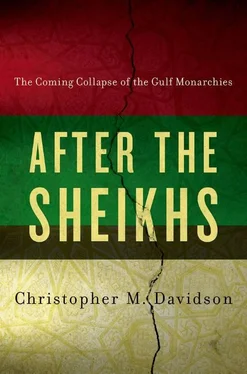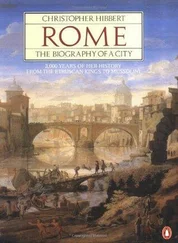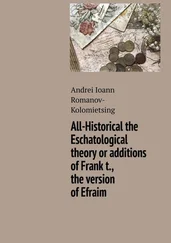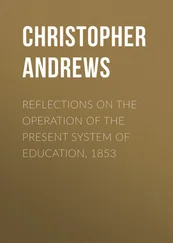IRENA
International Renewable Energy Agency
ISP
internet service provider
JAFZ
Jebel Ali Free Zone (of Dubai)
JETRO
Japan External Trade Organisation
JODCO
Japan Oil Development Company
KAUST
King Abdullah University of Science and Technology
KCIC
Kuwait-China Investment Company
KFAS
Kuwait Foundation for the Advancement of Sciences
KFAED
Kuwait Fund for Arab Economic Development
KIA
Kuwait Investment Authority
KIPCO
Kuwait Projects Company
LSE
London School of Economics and Political Science
NYU
New York University
ODA
official development assistance
OECD
Organisation for Economic Co-operation and Development
OPEC
Organisation of the Petroleum Exporting Countries
P&O
Peninsula and Orient Steam Navigation Company
PDRY
People’s Democratic Republic of Yemen
PFLOAP
Popular Front for the Liberation of the Occupied Arabian Gulf
PRC
People’s Republic of China
PGA
Professional Golfers Association
PIN
personal identification number
QIA
Qatar Investment Authority
QPC
Qatar Petroleum Company
QSI
Qatar Sports Investments
QE2
Queen Elizabeth 2 cruise liner
RAND
Research and Development Corporation
SABIC
Saudi Arabian Basic Industries Corporation
SCR
Supreme Council of Rulers (of the UAE)
Sinopec
China Petroleum and Chemical Corporation
SMS
short message service
SPC
Supreme Petroleum Council (of the UAE)
TDIC
Tourism and Development Investment Company (of Abu Dhabi)
UAE
United Arab Emirates
UCL
University College London
UK
United Kingdom (of Great Britain and Northern Ireland)
UN
United Nations
UNDP
United Nations Development Programme
UNESCO
United Nations Education, Scientific, and Cultural Organisation
UNICEF
United Nations Children’s Fund
UNRWA
United Nations Relief and Works Agency
UNSC
UN Security Council
US
United States (of America)
USSR
Union of Soviet Socialist Republics
VAT
value added tax
WTO
World Trade Organisation
ZCCF
Zayed Centre for Coordination and Follow-Up
Central to the stability of the world’s oil and gas industries and home to the birthplace of Islam, Saudi Arabia and its five smaller neighbours — the United Arab Emirates, Kuwait, Qatar, Oman, and Bahrain — have long fascinated scholars, diplomats, and journalists. In recent years international interest in the ‘Gulf monarchies’ of the Arabian Peninsula has soared. Not only have they played a key role in the War on Terror — on both sides of the conflict — but they also now account for the lion’s share of the Arab World’s gross domestic product [1] 1. According to International Monetary Fund data from 2010, the six Gulf monarchies had a combined GDP of $993 billion. This was more than half of the $1903 billion total GDP for all twenty-two Arab League member states at the time. Most dramatically, Saudi Arabia and the UAE together accounted for 35 per cent of the Arab League total. International Monetary Fund 2010; author calculations.
founded on ever-rising trade flows, financial zones, tourism, and even real estate sectors.
Since their formation and in some cases independence in the mid-twentieth century, the Gulf monarchies have remained governed by highly autocratic and — as many have argued — seemingly anachronistic regimes. Nevertheless, their rulers have demonstrated remarkable resilience despite having bloody conflicts on their doorsteps, fast-growing populations, and powerful modernising and globalising forces impacting on largely conservative societies. Obituaries for these traditional polities have frequently been penned — in some cases by leading commentators — but even now, well into the twenty-first century, these absolutist, almost medieval entities still appear to defy their critics. If anything, with the 2011and 2012 ‘Arab Spring’ revolutions that have been sweeping aside the region’s republics and accelerating the fall of other incumbent presidents, the apparently steadfast Gulf monarchies have, at first glance, re-affirmed their status as the Middle East’s only real bastion of stability. Even when violence and unrest erupted in some of their cities, this was largely contained, and the integrity of monarchy as a legitimate political system was ostensibly maintained. After all, as the lickspittle spokesmen and legions of public relations consultants employed by the Gulf monarchies are usually quick to point out, these states are somehow different: they are not ‘dictatorships’ and should thus be immune from precipitate political upheaval.
The near future, however, is far less predictable for the kings, emirs, and sultans currently in power. Serious internal and external pressures have been accumulating in the Gulf monarchies, in some cases long preceding 2011. Although these have had an uneven impact on the region due to significant socio-economic and political disparities, there are nonetheless important patterns and commonalities in these pressures which mean they will soon affect all six states. Indeed, a compelling argument can be made that these regimes are now, more than ever, only as strong as the weakest link in their chain. If an especially brittle monarchy succumbed to a popular revolution or fell into a state of anarchy, then a veritable ‘domino effect’ could unfold, as the erstwhile illusion of stability or invincibility that has distinguished the Gulf monarchies from the floundering Arab republics would be swiftly dispelled. In this scenario, if one Gulf state failed, then even the wealthiest and most confident of rulers would find their positions, or at least their legitimacy, under threat.
Some of the mounting pressures have clearly been recognised by the Gulf monarchies, but many others have been ignored, inadequately addressed, or left undiagnosed for too long. Thus, after considering the earlier, unsuccessful predictions of monarchical demise and providing an understanding of the emergence, development, and survival of these polities to date, this book’s primary purpose will be to identify better these contemporary pressures and demonstrate why they now matter so much. Against this backdrop I will assert that these pressures will soon lead to the collapse of the Gulf monarchies, or at least most of them in their present form. Although I claim that this collapse is inevitable — regardless of the Arab Spring and wider events — an argument is made that the revolutionary movements of 2011 and 2012 in North Africa, Syria, and elsewhere are undeniably going to serve as important, if indirect catalysts for the coming upheaval in the Persian Gulf. Not least because many of the pressures that had been building up in the Arab republics are now also manifest in the Gulf monarchies, even if sometimes below the surface.
The revolutions that never came
By the time the monarchies were all independent states in the early 1970s the threat of some sort of popular, Gamal Abdul Nasser-inspired Arab nationalist revolution reaching the Persian Gulf seemed to have petered out. As discussed later in this book former national front activists, especially in Dubai, Bahrain, and Kuwait, had long since been co-opted by their respective ruling families, often becoming successful businessmen with stakes in fast growing, oil-rich economies. [2] 2. For discussions of this activity see, for example, Davidson, Christopher M., ‘Arab Nationalism and British Opposition in Dubai, 1920–1966’, Middle Eastern Studies , Vol. 43, No. 6, 2007; Fuccaro, Nelida, Histories of City and State in the Persian Gulf: Manama since 1800 (Cambridge: Cambridge University Press, 2009); Crystal, Jill, Oil and Politics in the Gulf: Rulers and Merchants in Kuwait and Qatar (Cambridge: Cambridge University Press, 1995).
The humiliation of military defeat by Israel in 1967 had also dealt a significant blow to the prestige of the Arab republics and their ability to project nationalist sentiments elsewhere, and the final nationalist revolution — Libya in 1969—served only to clear a path for Muammar Gaddafi’s military junta. Moreover, despite their non-revolutionary status and an ‘Arab Cold War’ between Egypt and Saudi Arabia in the 1960s, [3] 3. For a full discussion see Kerr, Malcolm, The Arab Cold War, 1958–1970 (Oxford: Oxford University Press, 1971).
by 1971 all of the Gulf monarchies had become full members of the Cairo-based Arab League, [4] 4. Saudi Arabia, already an independent state, was able to join the Arab League upon its inception in 1945. Kuwait joined in 1961, and was followed by the other Gulf monarchies in 1971.
and, through their partial participation in the Organisation of the Petroleum Exporting Countries cartel, [5] 5. Saudi Arabia and Kuwait joined OPEC upon its inception in 1960. Qatar joined in 1961, and the UAE’s principal oil-exporting emirate of Abu Dhabi joined in 1967. Bahrain, Oman, and the UAE’s other constituent members eschewed OPEC.
they were increasingly tolerated by the Arab republics and perceived as playing a reasonably active role in countering Israel and other foreign interests in the region.
Читать дальше












